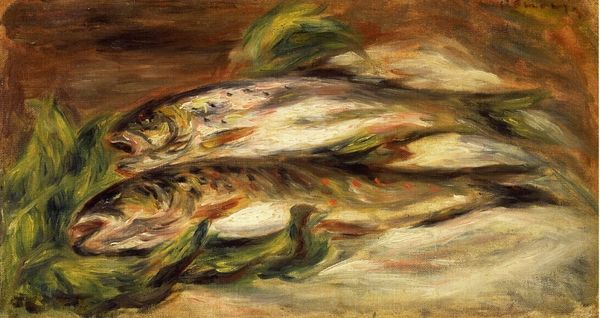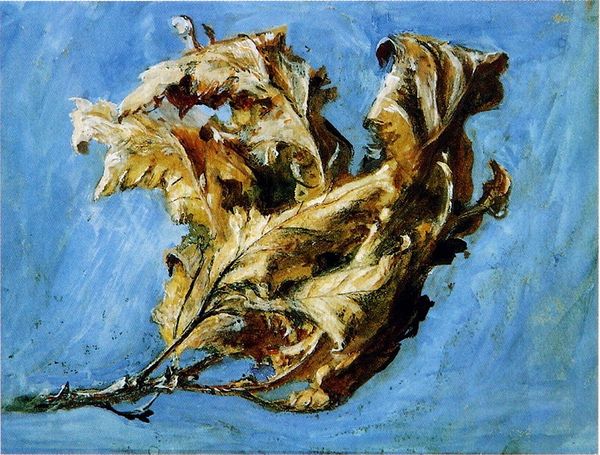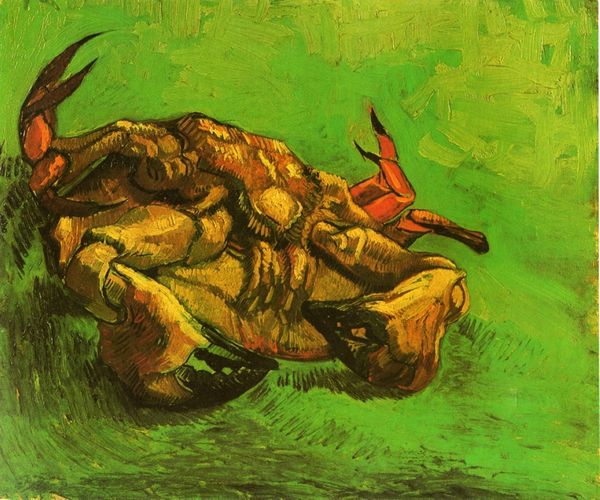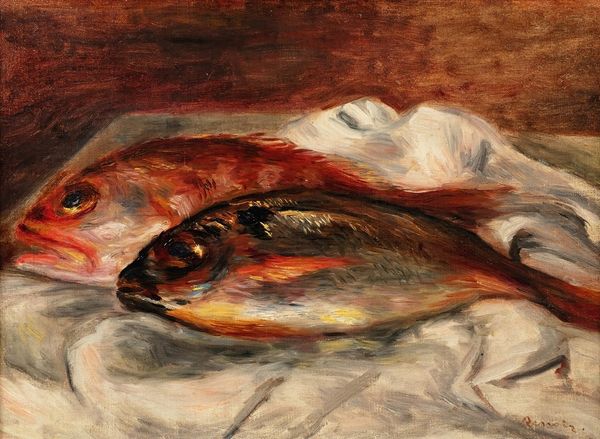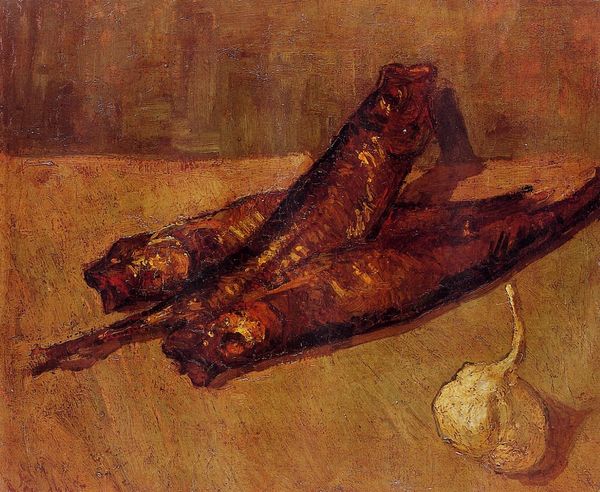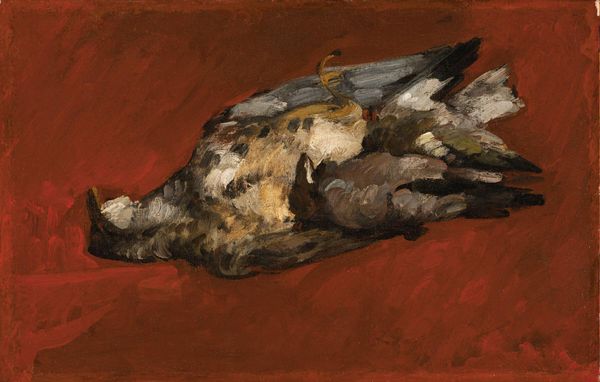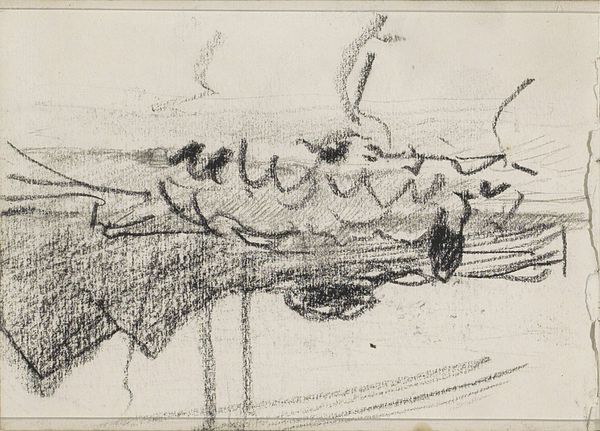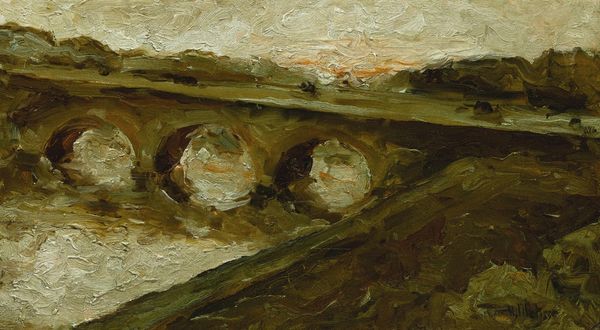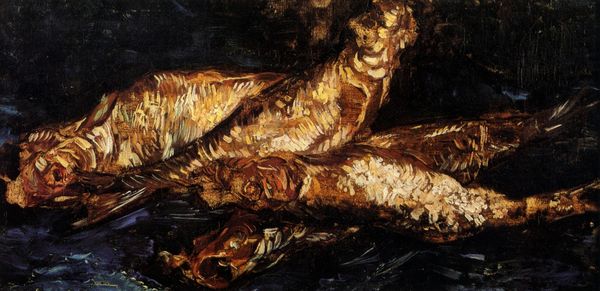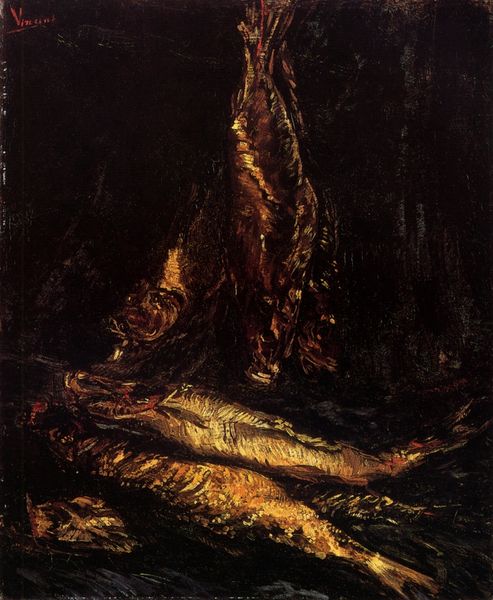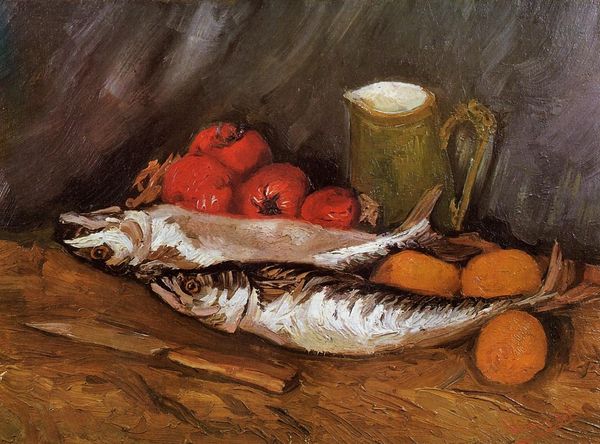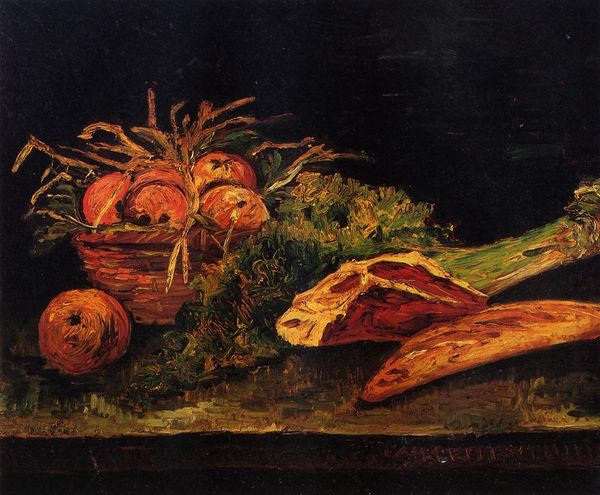
painting, oil-paint, impasto
#
painting
#
impressionism
#
oil-paint
#
landscape
#
flower
#
oil painting
#
impasto
#
plant
#
post-impressionism
Copyright: Public domain
Curator: Here we have Vincent van Gogh's "Still Life with a Basket of Crocuses," painted in 1887. It’s currently held at the Van Gogh Museum in Amsterdam. Editor: My initial impression is one of… muted vitality. The color palette is predominantly earth tones, yet there’s this burst of emerging plant life that really grabs the eye. It feels strangely poignant. Curator: Indeed. Van Gogh painted this while in Paris, during a period where he was experimenting with brighter colors and the techniques of Impressionism. It marks a point in his evolution away from darker, more traditionally Dutch palettes, even if this isn't one of his most vibrant canvases. You can see this shift taking root, pardon the pun, in the impasto technique and broken brushstrokes, particularly in the background. It’s all about capturing the light. Editor: Precisely. And that impasto! It's so thick you can almost feel the texture of the soil and the spiky shoots. Look how he's built up the surface—it's not just paint, it's a tactile representation of growth. Also the composition, how the basket takes a diagonal direction into the depth, adds to the overall impression of volume. Curator: I find myself reflecting on Van Gogh's state of mind at the time. He was trying to break into the Parisian art scene, facing numerous rejections and personal struggles. This simple still life perhaps reflects a search for beauty and hope amidst the turmoil, and reminds us of the important role art played in 19th century urban social environments and of how botanical aesthetics were gaining new presence due to changes in land usage within cities. Editor: That's a compelling reading. And considered from a purely visual perspective, it's a masterclass in using a limited palette to evoke a feeling of burgeoning life. The placement of those few, early shoots almost dead center within the image generates incredible emphasis and anticipation. They are a beacon. Curator: A humble beacon, painted during a crucial time in Van Gogh's artistic and personal development. It represents a transitional moment in his production as he tried to fit into new milieus and aesthetic parameters. Editor: Ultimately, its humble scale and the subtle handling of light make it surprisingly memorable, wouldn’t you say? It's far more impactful than it first appears.
Comments
No comments
Be the first to comment and join the conversation on the ultimate creative platform.
